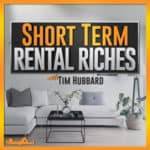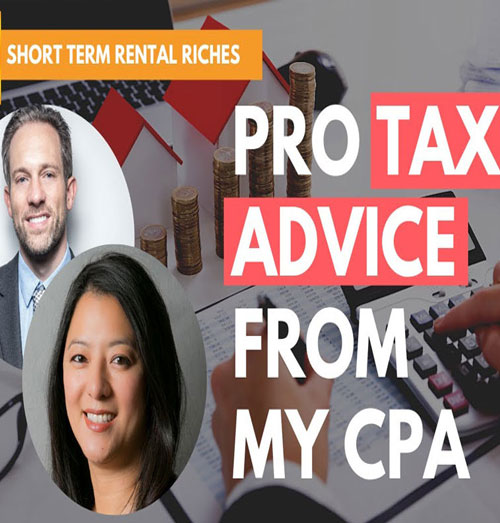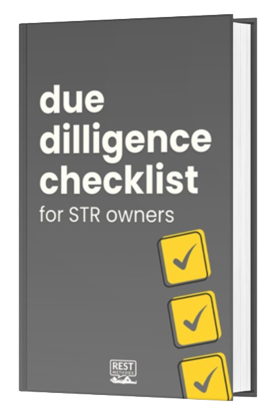How to build an Airbnb Business: How to Measure and Improve Your Property Performance
These days there are so many resources and experts for every industry. They seem to come from all directions. Some even seem to become experts overnight (be careful).
It’s no different in the short-term rental world. We’ve talked about some of those experts in the past, we’ve had some of them on the show, and we’re always discovering new ones and people to go-to.
But does any of that really matter?
It might…
If you’re using the advice and research wisely then absolutely.
We don’t want you to get into analysis paralysis but we do want you to get into the short-term rental world.
For me, it’s been life-changing.
I feel very fortunate to be doing what I love (from anywhere in the world).
At the end of the day though our success comes down to one thing; property performance.
And while expert and guru advice can be a huge help it still doesn’t help us figure out how well our properties are actually doing!
No, that’s something we need to do for ourselves.
So how exactly do we do that? Determine if our short-term rental is doing better than our neighbors.
If it’s doing better than the average.
We need a scorecard and this week I’ll fill you in on exactly what your property scorecard should have.
Stay tuned as we unravel how to grade your properties success:
- Creating a comp set
- Comparing apples to apples
- Removing the “outliers”
- Insights you will gain
You can find all of our links here including our recommended resources, short-term rental playbook, Instagram, and more!
Cheers,
Your Short-Term Rental Expert
Tim Hubbard
P.S. Looking for help managing your property? Click here to find out how we can partner up
Click Here to view TranscriptWelcome back to the Short-Term Rental Riches podcast. Today, we’re gonna be talking about your property scorecard. When you were in grade school, you got graded on your subjects, didn’t you? Well, I think it’s time that we all grade our properties and I wanna talk about how we can do that in today’s episode. Stay tuned.
Welcome to short-term rental riches. We’ll discuss investing in real estate but with a specific focus on short-term rentals. Quick, Actionable items to Acquire, Manage and Scale your portfolio. I’m your host Tim Hubbard.
Welcome back to the Short-Term Rental Riches podcast. I’m back here in sweet old Medellin, Colombia. I love this place. You guys have heard me talk about it quite a lot. And I’ll be here pretty much through the rest of the year, minus a few side trips. I was just in Belize for almost 10 days at a really good conference, macroeconomic conference. So, a lot of big thinkers there, a lot of big minds and have been going year after year, great connections. It’s always good to get in there and just meet people in the real estate industry. And there’s so many different types of real estate, just like there’s long-term rentals, there’s short-term rentals, but we talk about commercial real estate and the whole big picture. And I’m getting ready to go back to the US, a lot of traveling these days, but going back to Austin, Texas next week, actually to speak on a panel at the IMN conference there in Austin. So, I’m looking forward to that, looking forward to catching up with some friends that happen to live out there too. And if you’re going to the conference, I would love to see you there. So, make sure to give me a shout if we cross paths.
So today I want to talk about how we can grade our property because a lot of people are asking, a lot of people are thinking, ah, shoot, my property’s not doing that well. The occupancy is down. Maybe my average daily rate is down. Maybe my average daily rate is high, but my occupancy is lower. So how do we really know if our property is doing well? There’s a pretty easy way and that’s by creating a comp set. So, I want to talk about how you can create a comp set. I use Price Labs. You guys have heard me talk about that one before, but you can also create comp sets with other dynamic pricing tools like Wheelhouse. So, before we can create a comp set though, and a comp set is essentially a set of properties in our market that are comparable that we can compare our property to. So, there’s certain things that we’re going to want to put in there. We need to be comparing apples with apples. We can’t compare a four-bedroom home with a small studio, for example. So, I want to run through some of those and then afterwards I want to run through some of the things that that comp set’s going to give you. And then just a couple of things that you can do to kind of shoot for the stars and make sure you’re always ahead of your competition.
So, the first thing is we’re creating our comp set. We need to create a radius. So that’s how far out we’re actually going to search around our property. If you’re not using a pricing tool yet, like Price Labs, I highly suggest you do it. It’s worth the minimal amount of money that it costs each month. It’s highly, highly important information. It could be the difference between you making money with your property each month and you losing money. So, the first thing is we need to get a radius, a segment of the market that’s comparable area to our property. So, if you’re in an urban area, there’s going to be a lot of properties in short distance. If you’re out somewhere on a ranch style property, well then, you’re going to have less comps. And so of course your radius, you’re going to want to make that bigger. So, once we’ve determined our radius, and again, we don’t want to be including areas that are maybe across the street in some places, and it’s a totally different type of neighborhood, we want to weed those sorts of properties out. So, we want to make sure that we’re comparing the right size property compared to ours. So, if it’s a two bedroom, we want to compare with other two bedrooms. We want to compare in similar neighborhoods. So that’s where the radius is going to come through. And these tools and the dynamic pricing software is going to allow us to pick and choose what actual properties come up in these search results.
So, we’re just going to go through and remove the outliers, the ones that don’t really fit our comp set or match up to our property well before we actually use the data from them. So, if you’re not using a pricing tool, this is probably sounding like really foreign to you. And I would suggest, first of all, that you use a pricing tool. But if not, if you’re just on Airbnb, or you’re just on VRBO, well, then you could create this yourself. You can create a Google sheet. You can search other properties in your neighborhood. But unfortunately, you’re not going to have a lot of that good back-end data that we’re going to be able to get with some of this pricing software. So, once we have our radius, once we’ve compared our properties to similar properties, we also want to compare amenities. So, if our property has a lovely infinity pool with a beautiful view, then we can’t compare that property to another property that doesn’t have a pool and infinity view, unless it doesn’t matter in your neighborhood. So again, these pricing tools allow us to see what the demand is for certain amenities, so really valuable information there.
The next piece that we want to put into our comp set is reviews, our reviews. So, we want to make sure that we’re not comparing our property that maybe only has two reviews to one that has 400 reviews. Those aren’t getting equal visibility on the OTAs. So, we want to make sure what I like to do is maybe weed out all the properties that are just brand new. So maybe you want to select properties that have over five reviews, but then maybe somewhere near the amount of reviews that your property has. The next thing we’re going to want to do is make sure that we’re not comparing our properties to other properties that aren’t listed all year. That’s assuming your listed all year. If you happen to stay in your property six months out of the year, well then you could compare to other properties that are only available six months out of the year, but your data is going to be a little skewed. So, I recommend that you filter out all the properties in your comp set, all the properties that showed up within that radius to only the properties that are listed all year long. That way you know that they’re professionally managing those properties or their individual owners that really care about their properties and it’s going to give you a lot better comp set.
The next thing you’re going to want to do is weed out any properties that had an average reservation that’s much different than yours. So again, these pricing tools give you this data. You can jump on YouTube, check out Price Labs tools, just get an idea of how they work if you haven’t already. But hopefully you’re understanding how important this data really is and that how we’re pretty much blind out there if we’re not looking at our neighborhood comparable properties. If we don’t know what our neighbors and the market is doing, then we can’t really say whether our property is doing well or not. Of course, we could compare it to last year and we could say, yeah, unfortunately my occupancy is down 15 % year over year. And the reality is, is that nationwide we’re down a little bit, but that’s just the nature of the game. So, if we want to know how we’re doing, we need to be comparing our property to other properties that are still listed on the market to see if we’re doing better than them or if we’re falling behind. So, with our comp set created, you will be able to pick and choose which properties you want to be in that comp set. Now, I wouldn’t suggest selecting a thousand properties or 500 properties. You want some small subset of properties that’s manageable and that you can compare frequently. So maybe every week, maybe every other week, maybe just once a month, but a small enough subset to where you can compare your property and know if you’re falling behind or not.
Now, the cool thing you can do is you can actually create multiple comp sets. So, let’s say that your property rents pretty well on a nightly basis, maybe your average reservations just three nights, but your property also has a potential to rent for a month or for two months or for a medium-term reservation. Well, you could create another duplicate comp set with everything else created equal, everything else equal. So same size property, same size amenities, but then weed out all other properties that had an average reservation of less than a month. And then what that will give you is the data on your market and what they’re charging for medium term stays or those longer reservations.
So, you know, if you were planning on renting your property for $4,000 a month, for example, and you ran your comp set for only properties that were rented long-term and you saw that they were all rented for $3,000 a month, well then, it’s not very likely that with everything else being equal, you’re going to be able to charge an extra $1,000 a month. So, the comp sets give us a ton of information. Once we run them, we can also get some high-level figures out of it. So, what the average daily rate is for that whole comp set, what the average booking window is for that whole comp set, what the average reservation length is for that whole comp set, what the seasonality is, so how it changes throughout the year.
So, these comp sets are gold. They allow us to grade our property and let us know how well we’re doing. So, I know we kind of got into the weeds here, some deep data stuff, but it’s really important know that these features exist. If you’re using a dynamic pricing software tool, if you’re not using one of these tools, I really suggest that you check one out. You can head over to our website at restmethods.com. We have our recommended resources there with all the software programs we’re using. If you’re just on Airbnb or you’re just on VRBO, you can compile a list like this, but it’s going to be a lot more challenging. It’s going to be a lot more work. And I think for the money, you will find a ton of value with these comp sets and it’s going to allow you to know how well your property’s doing. I hope your property’s doing really well and you’re staying in the game. You’re not getting discouraged by maybe a little less occupancy.
I think for all of us that currently have properties in these current economic times, that as long as we hang on and we continue to do a great job and we continue to have great guest experiences, well, we’re going to do well because reality is there’s not a lot of people buying new short-term rentals right now. Interest rates are high and that means that there’s less supply coming on the market. So, hang in there, check out your property, compare to others if you don’t think it’s doing that well, and that will tell you if it really is or not. I hope you guys are having a fabulous week and I look forward to catching up next time.
Want to get on the fast track to Financial Freedom through short-term rentals what all starts with the properties you acquire but you want to make sure that you acquired the right properties. I want to give you my e-book that will show you how to do just that. There is no charge, It’s my gift to you for being one of our subscribers. Just go to restmethods.com. That’s R-E-S-T methods.com
RELATED PODCAST EPISODES















